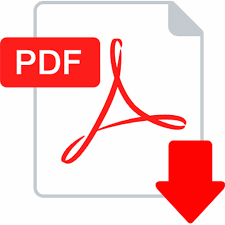
РОЗВИТОК ПІДХОДІВ ДО КЛАСИФІКАЦІЇ КРЕАТИВНИХ ІНДУСТРІЙ
Т. В. Корявченкова
DOI: 10.32702/2307-2105-2020.3.148
УДК: 330.131.3
Т. В. Корявченкова
РОЗВИТОК ПІДХОДІВ ДО КЛАСИФІКАЦІЇ КРЕАТИВНИХ ІНДУСТРІЙ
Анотація
У статті акцентовано увагу на ключових проблемних питаннях існуючих підходів до класифікації креативних індустрій. Обґрунтовано необхідність їх розвитку на основі розмежування процесів створення соціально-культурних цінностей (виникнення ідеї – виробництво) та їх пропонування (поширення – споживання). На цій підставі виокремлено дві групи підприємств креативної індустрії: творці соціально-культурних змістів та мережі репродукування творчих продуктів. Розроблено науково-методичний підхід до класифікації креативних індустрій на основі специфіки творчих продуктів та способів їх масштабування (просування). Види діяльності творців соціально-культурних змістів згруповані на основі таких класів творчих продуктів як культурна спадщина, продукти сучасної креативної індустрії, інтелектуально-креативні послуги. Види діяльності мереж репродукування творчих продуктів згруповані відповідно способів масштабування на основі матеріально-технічних носіїв, віртуально-цифрових та інформаційно-комунікаційних технологій, культурних інституцій, масових заходів. Доведена доцільність розширення переліку видів економічної діяльності, які належать до креативних індустрій відповідно до вітчизняного законодавства.
Ключові слова: види економічної діяльності; креативні індустрії; творчий продукт; культурна спадщина; продукти сучасної креативної індустрії; інтелектуально-креативні послуги.
Література
1. DCMS Creative Industries Mapping Document 2001. URL: https://static.a-n.co.uk/wpcontent/uploads/2016/12/DCMS-Creative-Industries-Mapping-Document-2001.pdf (дата звернення: 10.03.2020).
2. Throsby D. Modeling the cultural industries. International Journal of Cultural Policy. 2008. Vol. 14 (3). P. 217–232.
3. Хесмондхал Д. Культурные индустрии. Москва : Изд. Дом Высшей школы экономики, 2014. 456 с.
4. The Challenge of assessing the Creative Economy: towards Informed Policy-making. Creative Economy Report – 2008. URL: http://unctad.org/en/docs/ditc20082cer_en.pdf. (дата звернення: 10.03.2020).
5. Mapping the creative industries: a toolkit. Creative and cultural economy series 2. British Council. 2010. Р. 61.
6. Про затвердження видів економічної діяльності, які належать до креативних індустрій : Розпорядження Кабінету Міністрів України від 24 квітня 2019 р. № 265-р. URL: https://zakon.rada.gov.ua/laws/show/265-2019-%D1%80#Text (дата звернення: 10.03.2020).
7. Гнедовский М. Творческие индустрии: политический вызов для России. Отечественные записки. 2005. № 4 (25). С. 12.
8. Браун Дж. Культурные индустрии. Выявление культурных ресурсов территории. URL: http://www.cpolicy.ru/analytics/64.html (дата звернення: 10.03.2020).
9. Мьеж Б. Креативные индустрии: в поисках стабильности концепта. Коммуникации. Медиа. Дизайн. 2018. №4. С. 22–37.
T. Koryavchenkova
DEVELOPMENT OF APPROACHES TO THE CLASSIFICATION OF CREATIVE INDUSTRIES
Summary
The article focuses on the key issues of existing approaches to the classification of creative industries: the lack of generally accepted methods of typology; a variety of regional "lists" of creative industries, taking into account the uniqueness of the country. It is noted that only two years of existence of the legally established list of creative industries in Ukraine have affected the lack of systematic studies of the dynamics of their development. Within the framework of general scientific research, the issues of forming a universal system of their classification on various grounds of grouping for the sake of a differentiated approach to solving the issues of their functioning and development remain relevant.
The necessity of development of approaches to classification of creative industries on the basis of differentiation of processes of creation of social and cultural values (origin of idea - production) and their offer (distribution - consumption) is substantiated. On this basis, two groups of enterprises of the creative industry have been identified: creators of socio-cultural content and networks of reproduction of creative products. A scientific and methodological approach to the classification of creative industries based on the specifics of creative products and methods of their scaling (promotion) has been developed. Activities of creators of socio-cultural content are grouped on the basis of such classes of creative products as cultural heritage, products of the modern creative industry, intellectual and creative services. Activities of networks of reproduction of creative products are grouped according to the methods of scaling on the basis of material and technical media, virtual-digital and information-communication technologies, cultural institutions, mass events. The expediency of expanding the list of economic activities that belong to the creative industries in accordance with domestic legislation, such as: activities for the protection and use of historical monuments, buildings and other cultural monuments; operation of botanical gardens, zoos and nature reserves; operation of attractions and theme parks; organization of other types of recreation and entertainment.
Keywords: types of economic activity; creative industries; creative product; cultural heritage; products of modern creative industry; intellectual and creative services.
References
1. DCMS Creative Industries Mapping Document 2001 (2001), available at: https://static.a-n.co.uk/wpcontent/uploads/2016/12/DCMS-Creative-Industries-Mapping-Document-2001.pdf (Accessed 10 March 2020).
2. Throsby, D. (2008) “Modeling the cultural industries”, International Journal of Cultural Policy, vol. 14 (3), рр. 217-232.
3. Hesmondhal, D. (2014), Kul'turnye industrii [Cultural industries], Dom Vysshej shkoly jekonomiki, Moscow, Russia.
4. The Challenge of assessing the Creative Economy: towards Informed Policy-making (2008), Creative Economy Report, available at: http://unctad.org/en/docs/ditc20082cer_en.pdf (Accessed 10 March 2020).
5. Mapping the creative industries: a toolkit. Creative and cultural economy series 2 (2010), British Council, London, England
6. Cabinet of Ministers of Ukraine (2019) “Decree of the Cabinet of Ministers of Ukraine “About the consolidation of the types of economic activity, which should lie before the creative industries", available at: https://zakon.rada.gov.ua/laws/show/265-2019-%D1%80#Text (Accessed 10 March 2020).
7. Gnedovskij, M. (2005), “Creative industries: a political challenge for Russia”, Otechestvennye zapiski, vol. 4 (25), р. 12.
8. Braun, Dzh. “Cultural industries. Identification of cultural resources of the territory”, available at: http://www.cpolicy.ru/analytics/64.html (Accessed 10 March 2020).
9. M'ezh, B. (2018), “Creative industries: in search of concept stability”, Kommunikacii. Media. Dizajn, тom 3, vol. 4, рр. 22-37.
№ 3 2020
Дата публікації: 2020-03-27
Кількість переглядів: 16443

